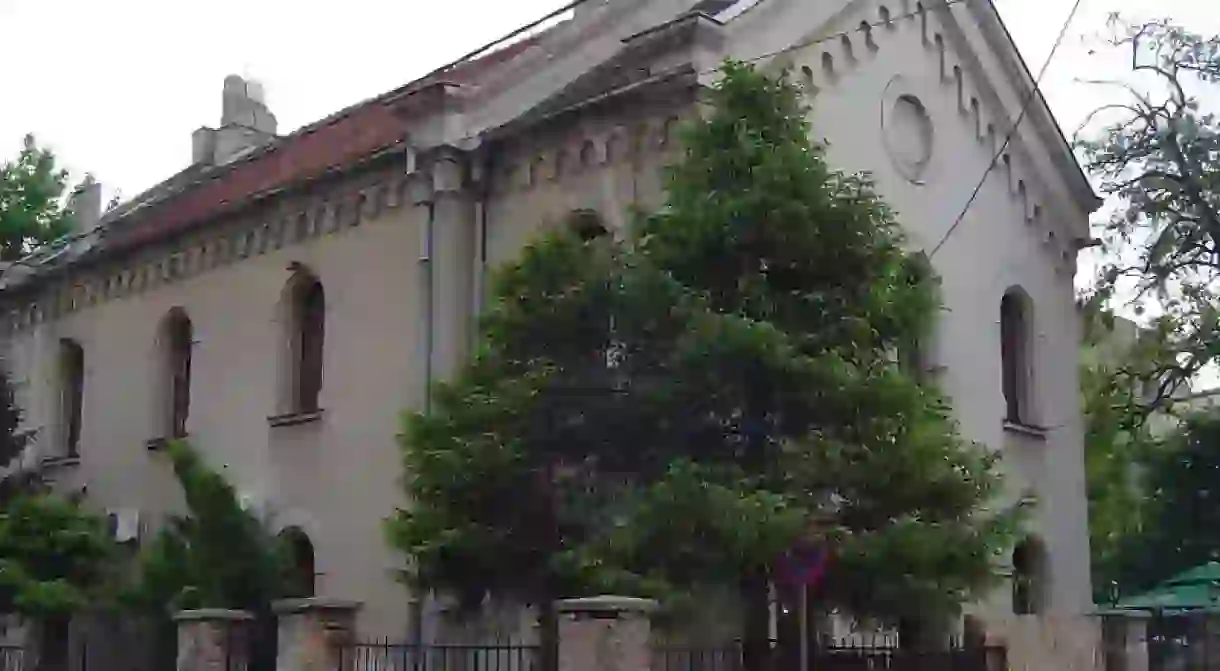The Strange Past, Present and Future of Zemun's Synagogue

If you dig deep enough in any former socialist country, you’ll find various religious communities that have experienced struggles and crises as they fight to survive and believe in peace. The strange past, present and future of Zemun’s synagogue may well be the best example of this in Serbia.
The beginning
Belgrade once had a sizeable Jewish community, although practically all traces of it were destroyed during World War II. Four synagogues stood in the city before the war, of which only one remains today. Zemun itself had two active Jewish communities pre—1941, the Sephardic and Ashkenzani.
The Sephardic Jews used a synagogue on Dubrovačka, built in 1850 in the Neo Romanesque style. The community was never particularly large, but it could be forgiven for feeling fairly comfortable as the 20th century got underway. The beginning of the Nazi Occupation in 1941 changed this, and a healthy community of some 600 people soon began to see its numbers shrink. Come the end of the war, 95% of Serbia’s Jews had perished.
The synagogue in Zemun was bombed by the Allies, continuing to exist only in ideological form until it was demolished in 1957. The glorious Moorish revival building was no more, but the confusion was only just getting started for the Jews of Zemun.

The past
The functional building that replaced the old synagogue served as a means to an end for the now-much smaller community, but the establishment of a socialist government meant that the future didn’t look particularly bright. That pessimistic prognostication proved precise, and the building was sold to the municipality of Zemun in 1962.
A cultural centre was established at the synagogue, an undesirable situation for the Jews but one immeasurably better than seeing it turned into a restaurant, a rock club, or something along similar lines. The sale of the synagogue was only completed under the proviso that the building would be used for educational and cultural means after all.
Enter Šešelj
Enter Vojislav Šešelj. The ultra nationalist figure from the wars of the early ‘90s became mayor of the municipality in 1996, and the future of the synagogue looked bleak once more. Šešelj promised the Jewish community that he wouldn’t rush with renting it out, only to confirm a restaurant takeover just three days later. The Jewish community was in shock and quickly appealed, only for Šešelj to tell them that they couldn’t tell him what to do with something that wasn’t theirs.
The restaurant became a rock club soon after, before reverting back to a restaurant in the 2000s. At one point, the Jewish Community of Zemun attempted to raise money in order to buy the building back, but their efforts proved unsuccessful.

The future
The municipality’s lease on the property comes to an end in September 2018, and it has since been confirmed that the building will be returned to the ownership of the Jewish community, some 46 years after it was forced out of their hands. What will become of the synagogue then?
Sač is the name of the restaurant currently in use of the property, and the owner of the traditional kafana has said that he will honour the agreement. He was just as quick to mention that 14 people earn their living from the restaurant, however, so it remains to be seen just how smooth the transition back to synagogue will be.
Will it even be a synagogue come September? Nobody is quite sure what the future of Zemun’s synagogue is. While it may not be plain sailing, many believe that the tumultuousness has passed. All we can do is wait and see.














